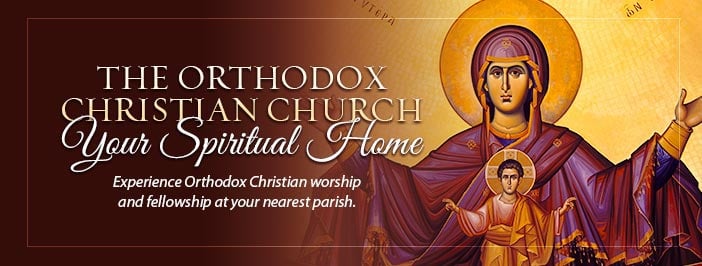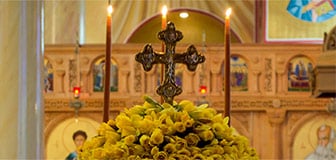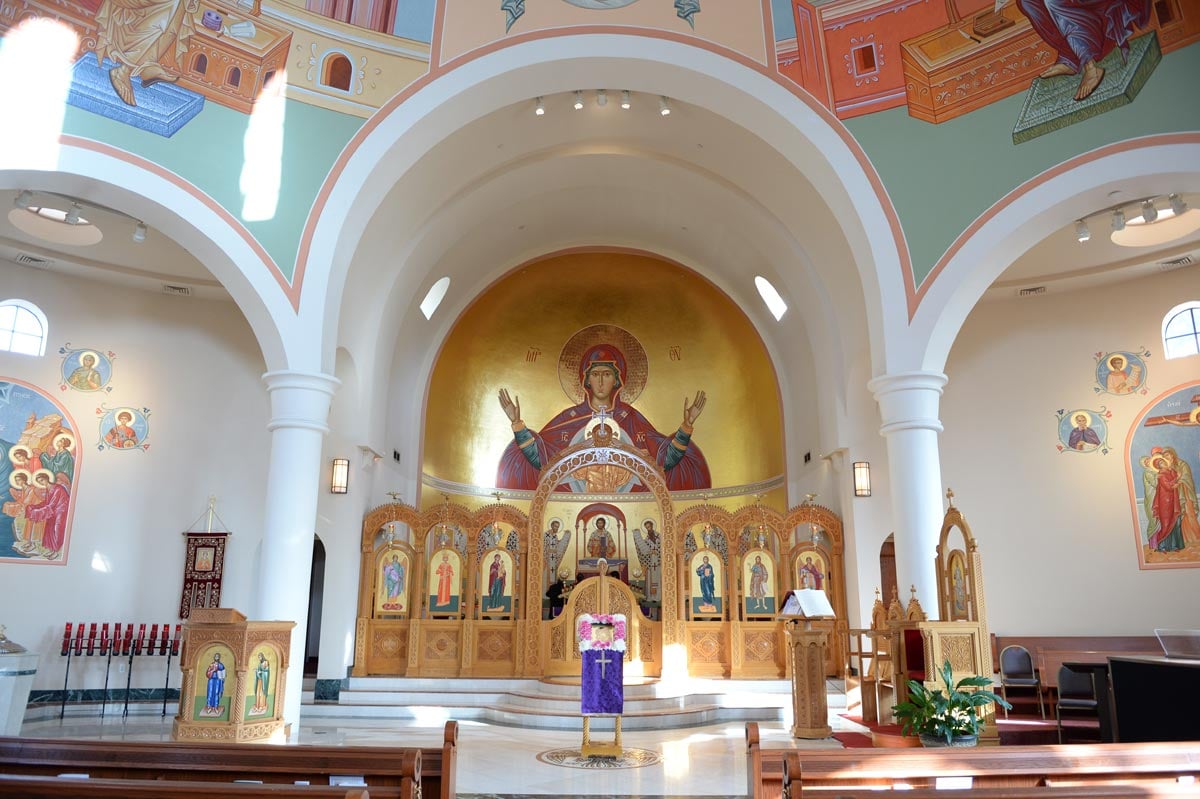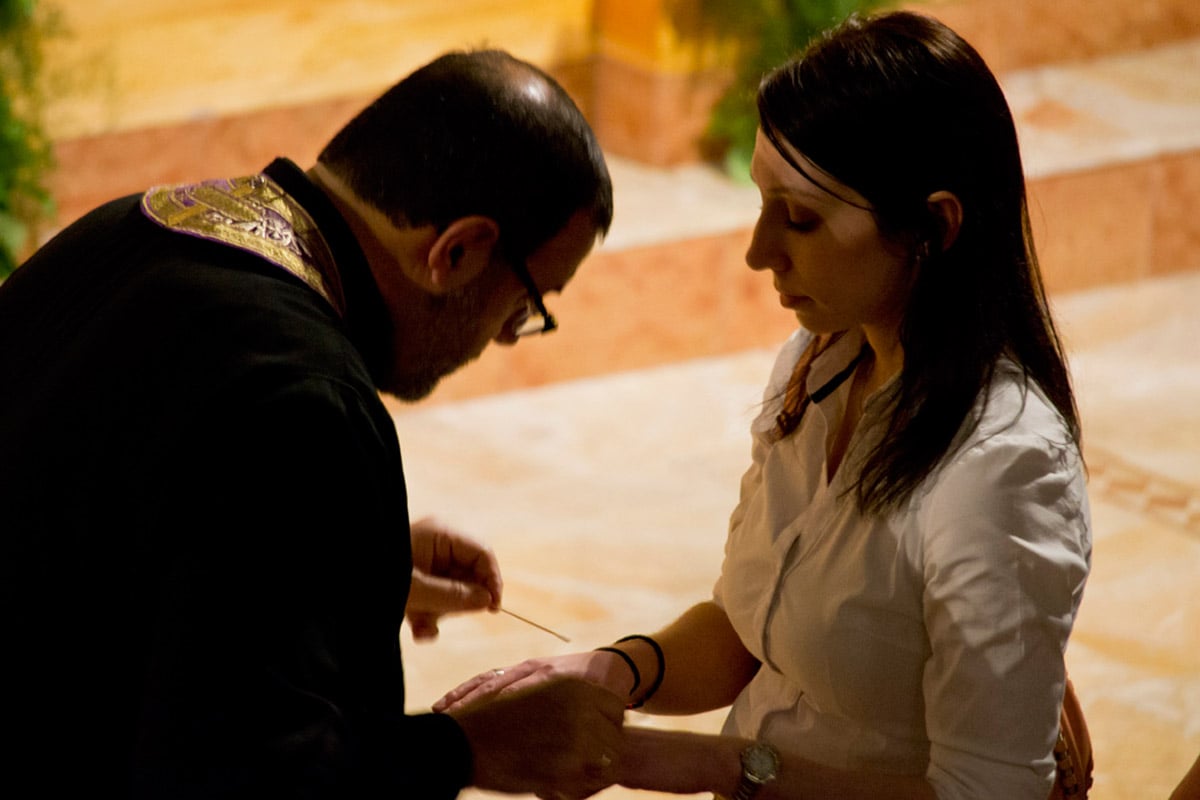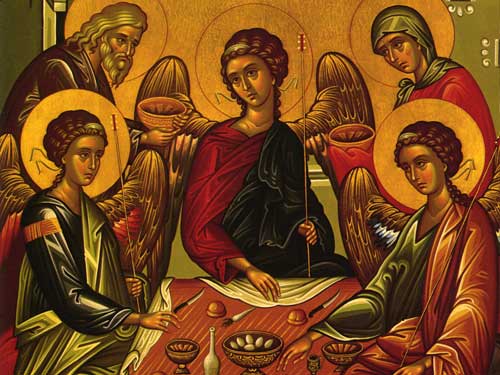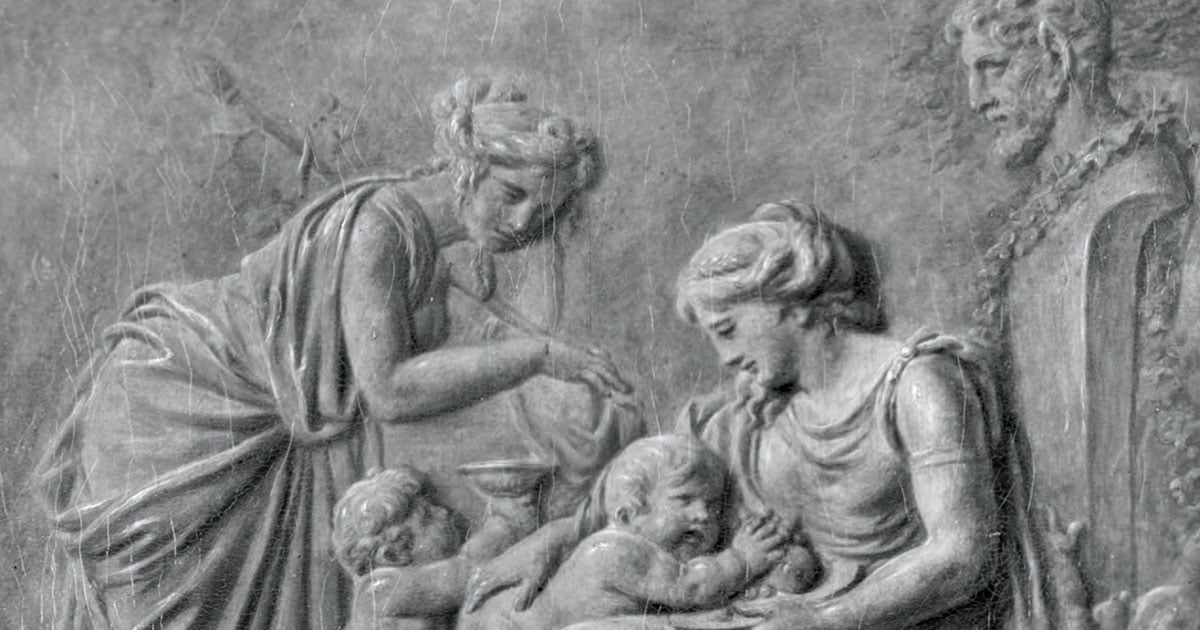Confession is in decline and repentance is misapprehended. The decline and the misapprehension cannot be easily qualified, but they are unmistakable at least inasmuch as they are considered to be no more than incidental practices in the life of the Church today. The "traditional" way of thinking of sin and forgiveness has collapsed among a growing number of Christians. Nothing less than a theological and pastoral renewal is necessary in order to rediscover the living meaning of repentance and confession.
The degeneration is often attributed to secularization. Yet secularization should not be seen, in a scapegoat fashion, as merely an external enemy. It acts from within the Church. Even those actively involved in church life suffer from formalism caused by the established patterns of religious practice. There is a need to appeal to the deepening of repentance and confession as spiritual realities rather than their imposition as obligatory customs. It is only in a realization of the nature of sacramental life that repentance acquires its significance as a way of renewal and reconciliation in Christ.
Repentance is indeed an act of reconciliation, of reintegration into the Body of Christ, which has been torn asunder by sin. For "if one member suffers, all suffer together" (1 Corinthians 12.26). "Therefore, confess your sins to one another ... that you may be healed" (James 5.16). The whole Church expresses a search for repentance in the repeated words of the Psalmist, commonly known as the "miserere" (Psalms 50). It is through the faith of the community that the individual is readmitted and forgiven. "When Jesus saw their faith he said, 'man, your sins are forgiven' " (Luke 5.20; cf. Matthew 9.2 and Mark 2.5). "Justification" in the New Testament does not mean a transaction - a kind of deal; and repentance defies mechanical definition. It is a continual enactment of freedom, a movement forward, deriving from renewed choice and leading to restoration. The aim of the Christian is not even justification but a re-entry by sinner and saint alike into communion in which God and man meet once again and personal experience of divine life becomes possible. Both prodigal and saint are "repenting sinners."
Repentance is not to be confused with mere remorse, with a self-regarding feeling of being sorry for a wrong done. It is not a state but a stage, a beginning. Rather, it is an invitation to new life, an opening up of new horizons, the gaining of a new vision. Christianity testifies that the past can be undone. It knows the mystery of obliterating or rather renewing memory, of forgiveness and regeneration, eschewing the fixed division between the "good" and the "wicked," the pious and the rebellious, the believers and the unbelievers. Indeed, "the last" can be "the first," the sinner can reach out to holiness. Passions are conquered by stronger passions; love is overcome by more abundant love. One repents not because one is virtuous, but because human nature can change, because what is impossible for man is possible for God. The motive for repentance is at all times humility, unself-sufficiency - not a means of justification for oneself, or of realizing some abstract idea of goodness, or of receiving a reward in some future life. Just as the strength of God is revealed in the extreme vulnerability of His Son on the Cross, so also the greatest strength of man is to embrace his weakness: "for my strength is made perfect in weakness. Most gladly therefore will I render glory in my infirmities, that the power of Christ may rest upon me" (2 Corinthians 12.9). To be flawed is the illogical, perhaps supernatural characteristic of humanity in which one encounters God.
The Greek term for repentance, metanoia, denotes a change of mind, a reorientation, a fundamental transformation of outlook, of man's vision of the world and of himself, and a new way of loving others and God. In the words of a second-century text, The Shepherd of Hermas, it implies "great understanding,"1 discernment. It involves, that is, not mere regret of past evil but a recognition by man of a darkened vision of his own condition, in which sin, by separating him from God, has reduced him to a divided, autonomous existence, depriving him of both his natural glory and freedom. "Repentance," says Basil the Great, "is salvation, but lack of understanding is the death of repentance." [2]
It is clear that what is at stake here is not particular acts of contrition, but an attitude, a state of mind. "For this life," states John Chrysostom, "is in truth wholly devoted to repentance, penthos and wailing. This is why it is necessary to repent, not merely for one or two days, but throughout one's whole life."[3]
Any division within oneself or distinction between the "time to repent" and the "rest of one's time" is, in the language of the Church, attributed to the demons. The role of these demons is extortionate, offensive - "diavallo," the root of the word "devil," means to tear asunder.[4] We cannot be deprived of true repentance or diverted from its path by the deception of demons. Yet the demons can work through virtue, working to produce a kind of spurious repentance. By nature we are destined to advance and ascend spiritually, but the demons divert the course by simulating advance in the form of a fitful movement, a wobbling from side to side, like crabs. One can test the quality of repentance by ascertaining whether it is fleeting or fluttering. Inconstancy and inconsistency are a danger signal; lastingness is auspicious. One is being tempted by the demons when one is caused "at times to laugh, and at other times to weep."[5]
The Two Dimensions of Repentence
Divine Initiative
Repentance is not a self-contained act: it is a passing over, a Pascha from death to life, a continual renewal of that life. It consists of a reversal of what has become the normal pattern of development, which is the movement from life to death. To experience this reversal in repentance is to have tasted of the glory and beauty of God; it is the mark of man's presence before God in the abundance of His mercy and of God's presence before man in the abyss of his weakness: "Set Your compassion over against our iniquities, and the abyss of Your lovingkindness against our transgression."[6] It is the awareness of God's beauty that makes one realize the chasm that separates one from His gratuitous grace. The initiative belongs to God, but presupposes man's active acceptance, which is a way of perpetually receiving God within the heart, of God being embodied within man, of divine incarnation. Here God calls man, and man responds to God and in doing so gains salvation and life abundant: "sorrow working repentance to salvation not to be repented of" (2 Corinthians 7.10). In repentance it is man's total limitation and insufficiency that is placed before God, not simply particular wrongdoings or transgressions.
The "dialectic" of beginning and end underlying repentance is important. Every manifestation of life has an eschatological dimension, even while, paradoxically, repentance gives rise to restoration, to a return to man's original state. Everything tends towards and expects the "end," even while being a matter of the here and now. To repent is not merely to induce a restoration of lost innocence but to transcend the fallen condition.[7] Indeed the greater the fall, the deeper and more genuine the repentance and the more certain the resurrection. Man is "enriched" by his experience even if it has been crippling and tormenting. The Fathers appear to express greater love - almost a preference - for the more sinful person, inasmuch as thirst for God increases in proportion to the experience of one's debasement and abasement (Romans 5.20).
The word for "confess" in Greek (ἐξομολογοῦμαι, ὁμολογῶ) does not bear the contemporary meaning peculiar to it. When we say "confess" we imply that we accept, recognize or witness an event or fact. But this is not the original meaning. The point is not of admitting, more or less reluctantly, a hitherto "unrecognized" sin, but an acceptance of and submission to the divine Logos (exomologesis) beyond and above the nature and condition of man.[8] It is this Logos, the Word of God, that man seeks to regain, or rather to commune with. To confess is not so much to recognize and expose a failure as to go forward and upward, to respond from within to the calling of God. Created in the image and likeness of God, man bears before himself and in himself that image and likeness. In repenting he does not so much look forward as reflects and reacts to what lies before and beyond him.
However, repentance is also a way of self-discovery: "Open to me the gate of repentance."[9] Metanoia is the gateway to oneself, to one's fellowman, and to heaven. It leads inwards, but it also leads outwards by leading inwards. The world ceases to rotate round the self and begins to gravitate towards the other - the divine and the human other. Sin has the opposite effect. It blocks the way both inwards and outwards. To repent and to confess is to break out of this restriction, "to accept with joy," in Isaak the Syrian's words, "the humility and humiliation of nature," to transcend and to recover oneself. The world thereupon ceases to rotate around "me" and begins to gravitate towards the other, centering on God. Then, everyone and everything no longer exist for myself but for the glory of God, in the joy of the Resurrection. One is then able to comprehend more clearly the positive dimension of even sin, suffering, death, the devil and hell. Then, one discovers the depth of love crucified, the presence of the Lord in our midst - even "when the doors are shut" (John 20.19,26). One is not, however, demanded to love God from the outset, but rather to know that "God so loved the world, that He gave His only begotten Son" (John 3.16). Nevertheless, the love of God is implicit in His very nature. God Himself is the Archetype of divine love. When John the Theologian says that "God is love" (1 John 4.8,16), love is seen as an established ontological category of both divinity and humanity in His likeness. In fact, the beauty and loving freedom of the human person is, in the words of Nicholas Berdiaev, God Himself. It is He, "the creator of all ... who out of extreme erotic love moves outside Himself ... burning with great goodness and love and eros." It is He who is "the fullness of erotic love."[10] And it is this supreme love that moved God to create human nature in His image and likeness. "As Lover, He creates; and as Loved, He attracts all towards Him."[11] "As a mad Lover He desires His beloved human soul," says Saint Nilos.[12] "Herein is love, not that we loved God but that He loved us (1 John 4.10).
The response to this ineffable outpouring of love is none other than its acceptance. Repentance thereby acquires a different dimension to mere dwelling on human sinfulness, and becomes the realization of human insufficiency and limitation. Repentance then should not be accompanied by a paroxysm of guilt but by an awareness of one's estrangement from God and one's neighbor. Why, after all, does one not partake of Holy Communion after committing sin? Not for punishment, but surely because sin itself is a denial of communion. The paradox of God's love is that one is only saved again through communion. Although God is constantly being chased away by humanity, yet He returns day after day in the Liturgy;[13] in the words of the Psalmist, "the mercy of God runs after us all the days of our lives ... for His mercy endures forever" (Psalm 22.6, and 135). God is not only at the end of the journey of repentance but also at the beginning (Revelation 1.8), and Christ is the Way (John 14.6). One seeks, then, Him whom one already possesses; and the voyage is an unceasing arrival as well as a never ending departure. Man in all his sinfulness is loved by God if he can just keep moving towards God. When one does fall, if one only cries out with confidence, the fall is not into nothingness but into the arms of God stretched open once and for all on the Cross.
Human Response
"Penthos" is the conditioned sorrow of a repentant soul, adding sorrow upon sorrow each day, like a woman suffering in childbirth."[14]
Repentance, as has been noted, is not a mere incident or stage through which one passes and then leaves behind; rather it is an attitude which colors one's whole life and for which, at the same time, one must struggle continually. It is a way of life, and as such a way of transfiguration, in which man's heart and mind continuously receive illumination by the Holy Spirit. It is a continuous pathway, at least in this life, a perennial striving, an all-embracing motion and not merely an occasional emotion. Repentance is ultimately a gift of the Holy Spirit who transforms the heart of the human person, and not a fruit of individual effort or anguish.
Whether related to this continuity and endurance or to the depth of moral sensitivity involved, for the Fathers of the Church there is an intimate link between repentance and tears. There are other criteria,[15] but grief is paramount, and its intensity is proportionate to the depth of repentance. "Truly you are blessed, Abba Arsenios, for you wept for yourself in this world! He who does not weep for himself here below will weep eternally hereafter; so it is impossible not to weep, either voluntarily or when compelled through suffering."[16] Gregory the Theologian believed that everyone must weep. He even identified repentance with tears, whatever other ways of expressing it there may be: "All must shed tears, all must be purified, all must ascend."[17] Symeon the Theologian is even more definite: "Remove tears and with them you remove purification; and without purification no one is saved."[18]
The word penthos (mourning) has the same root as pathos (passion): both stem etymologically from the verb "to suffer." A Christian speaks of worthy suffering, of subsuming suffering in God, just as passion and mourning are subsumed in God. There is suffering in compunction (katanyxis = pricking), which also causes tears.' 'Joyful sorrow" transfigures this suffering and pain through grace. Penthos consists in mourning for the loss of God's presence; it makes for sorrow at His absence and thirst for Him. "Passion or suffering for God gives rise to tears."[19] Man is in a state of bereavement, and the Church Fathers and liturgical hymnology speak of Adam sitting opposite paradise in mourning over his bereavement and estrangement from God. The Makarian Homilies say that man must "weep his way back" to paradise.[20] But tears - a concomitant and a culmination of repentance - are also a turning point in homecoming, a pledge of return, and a firstfruit of its joy. The longing for return from exile is also an anticipation of the glory to come. Tears demonstrate the frontier between the present and the future.
The tradition of the Christian East gives special prominence to the "gift of tears."[21] The tradition can be traced to the New Testament, through the Desert Fathers, to John Klimakos, through to later times, with Symeon the New Theologian standing out as one of its most important witnesses. "Blessed are they that mourn, for they shall be comforted" (Matthew 5.4). Tears are primarily "up to God," and only derivatively "up to us." There is a thirteenth-century French tale "Le chevalier au Barizel" according to which the knight was supposed to fill up a barrel with water; he travels all over the world to do this, but the water always passes through the barrel. Seeing that his efforts achieve nothing, he weeps, and one teardrop is sufficient to fill the barrel. Tears bespeak a promise, and they are also proof of hope fulfilled, of sins forgiven. But there is a time to weep and a time to rejoice, although the one flows into the other. There is a kairos, "a season and a time" (Ecclesiastes 3.1) for each divine gift, and this kairos is the time in which God acts, calling us to participate in His action. Tears are a way and a consequence of purification through repentance; the ultimate goal is transcending light and delight.
The Sacrament of Confession
A Christian, at any rate an Orthodox Christian, views repentance as a dynamic act of responsibility to God, but also to other men. It is not pining away in narcissistic self-reflection, even while implying self-knowledge and self-examination. Sin itself is a relational act - a break in the "I-Thou" relationship. It concerns my relationship with another person. When the prodigal son "came to himself" in the Gospel parable (Luke 15), he did so in relation to his father: "I will arise and go to my father, and will say to him, 'Father, I have sinned against heaven and before You" (v. 18). We repent in the face of God; and we repent in communion with others, in the Church. Repentance in the early Church was in fact a solemn public act of reconciliation, through which a sinner was readmitted into church membership. Even in Buddhism, monks regularly confess their sins publicly before Buddha and the congregation; the phenomenology is the same as in the Church, even if the theology or ideology is different. Sin (and evil) divides, repentance conciliates, confession affirms the conciliation. Outside the community, outside the Church repentance would settle into guilty gloom, dulling the spirit or even driving to despair: metanoia turning into paranoia.
Confession, too, takes place within the Church. It is not a private procedure, a treatment of some guilt-ridden individual on an analyst's couch. It is not based on an admission of guilt and certainly cannot be reduced to a feeling of guilt, of liability for conduct contrary to norms and laws which render a person subject to punishment. It is related to what is deepest in man, to what constitutes his being and his relation with other human beings as well as with God. It is a sacrament - "the visible form of an invisible grace" (Saint Augustine), re-establishing a bond of union between God and man, between man and man. This is why confession also takes place within prayer because it is there that a personal relationship in all its intensity is realized both with God and the entire world. As such, confession and prayer are not merely technical terms but means and opportunities offered by the Church for overcoming sin and death. Repentance is indeed the cause and consequence of prayer, being the highest and fullest foundation for and form of prayer. "True prayer," according to Saint Anthony, "is that in which one forgets that one is praying,"[22] and genuine repentance enables one to forget oneself and simply long for God, who is present in the very depth of repentance. For it is 'before Him alone that one sins" (Psalm 50.3-4) - this is the personal or relational aspect of both sin and repentance.
The supreme act of communion is the eucharist, the communal sharing of bread and wine, symbolizing sacramentally the reconciliation to come and the reconciliation already achieved in the here and now. Repentance and confession as sacrament seals man's change of direction from disruption to reconciliation. An examination of the early forms of confession shows that they are derived from community services and even liturgies. Origen explicitly stresses the significance of the eucharist for the forgiveness of sins.[23] Later services for confession developed undoubtedly from community rites closely related to the eucharistic celebration, or else to the monastic offices of matins or compline.[24] Since forgiveness of sins involves reconciliation in and through the eucharist, the eucharistic prayer contains penitential elements as immediate preparation for communion.
In early Christian times the exhortation of James served as a foundation for the sacrament of repentance: 'Therefore confess your sins to one another, and pray for one another, that you may be healed' (5.16). Confession was regarded as a form of repentance and regeneration (Matthew 3.6; Mark 1.5; Acts 19.18). The actual ritual aspect of repentance was a direct result of such apostolic testimony, at first in the form of confession before the entire Church and, subsequently, before a spiritual father.[25] Nevertheless, the earliest order of confession is of relatively late origin (tenth century, and is ascribed to John the Faster, Patriarch of Constantinople.[26] This text may well be the source of later Greek and Slavonic services of confession. The communal, sacramental aspect of confession was more apparent in the early Church when penance constituted a public act rather than an individual episode. It was only after the fourth century that private confession was more widely practiced. But even then penance did not have the legalistic and clericalistic character which it acquired later. In fact, very few Church Fathers refer even to absolution as a formal procedure, although such silence does not necessarily mean that absolution in some form or other did not exist. It is the reduction of sin to a punishable legal crime, an act of lawbreaking inviting a penalty that is almost wholly absent in patristic literature.[27] "Have you committed a sin?," asks Saint John Chrysostom, "then enter the Church and repent of your sin ... For here is the Physician, not the judge; here one is not investigated but receives remission of sins."[28]
Unfortunately confession at times undermines and even replaces the genuine inner repentance of a Christian: people feel "entitled" to communion after confession. This contradicts the true nature of repentance. It is a result of the sacrament being narrowly and juridically reduced to "absolution." Scholarly theology tended to transpose the concept of sin, repentance and forgiveness into a forensic idiom, and placed the emphasis on the power of the priest to absolve. In the Orthodox Church, the priest is seen as a witness of repentance, not a recipient of secrets, a detective of specific misdeeds. The "eye," the "ear" of the priest is dissolved in the sacramental mystery. He is not a dispenser, a powerwielding, vindicating agent, an "authority." Such a conception exteriorizes the function of the confessor and of confession which is an act of re-integration of the penitent and priest alike into the Body of Christ. The declaration "I, an unworthy priest, by the power given unto me, absolve you" is unknown in the Eastern Orthodox Church. It is of later Latin origin and was adopted in some Russian liturgical books at the time of the domination of Russian Orthodox theology by Latin thought and practice .[29] The idea served to bring confession into disrepute, turning it into a procedure of justification and exculpation in respect of particular punishable offenses. Forgiveness, absolution is the culmination of repentance, in response to sincerely felt compunction. It is not "administered" by the priest, or anybody else. It is a freely given grace of Christ and the Holy Spirit within the Church as the Body of Christ.
A word must be said about "general" confession, as distinct from a face-to-face confession between penitent and priest. General confession, in certain circumstances, could be a living model of repentance as a communal act, involving the whole body of the Church and as such manifesting the very essence of confession.[30] But it is not strictly a substitute for personal confession, involving intimate self-examination on the part of the penitent and possible guidance on the part of the confessor. Altogether, the function of the priest should not be ignored or minimized. "All who have experienced the blessing of having as their confessor one imbued with the grace of true spiritual fatherhood," writes Bishop Kallistos Ware, "will testify to the importance of the priest's role. Nor is his function simply to give advice. There is nothing automatic about the absolution which he pronounces. He can bind as well as loose. He can withhold absolution - although this is very rare - or he can impose a penance (epitimion), forbidding the penitent to receive Communion for a time or requiring the fulfilment of some task. This, again, is not very common in contemporary Orthodox practice, but it is important to remember that the priest possesses this right ... Not that the penitence should be regarded as punishment; still less should it be viewed as a way of expiating an offense ... We do not acquire 'merit' by fulfilling a penance, for in his relation to God man can never claim any merit of his own. Here, as always, we should think primarily in therapeutic rather than juridical terms."[31]
The most significant effect of confession is indeed due neither to the penitent nor to the priest, but to God who heals our infirmities and wounds. It is not a matter of a letoff, a clearance; it has the force of healing, of making the penitent whole. As such it is a gift from God which man must be open to receive, and learn to receive: "Let us apply to ourselves the saving medicine of repentance; let us accept from God the repentance that heals us. For it is not we who offer it to Him, but He who bestows it upon us." [32] It is significant that the Greek for confession, exomologesis, implies not only confession but also thanksgiving (cf. Matthew 11.25; Luke 10.21): "I shall confess/give thanks to the Lord with my whole heart, and tell of all His wonders" (Psalm 9.1).
Reference has already been made to the cloud of guilt which at times shrouds the sacrament of confession. It is by no means a theoretical question, for guilt is part of the tragedy experienced by many people, whether in their personal lives or in the face of the appalling sufferings and misery - mental, physical, social - which afflict the world at large today and for which we all share the responsibility and the guilt. But in the specific context of repentance and confession, guilt is a highly misleading concept, largely fostered by Western thinking.[33] It originates in a hypertrophied individualistic, self-regarding view of sin and salvation, and indeed of repentance with its attendant legalistically oriented penitential system. Orthodoxy always resisted legalism, whether in repentance or in confession, eschewing both undue confidence in man's achievement or merit and the overwhelming sense of guilt, which is the negative aspect of being centered on oneself and seeking for some means to propitiate God's wrath. By contrast with this God is seen to declare His love for men at their most unacceptable. It is God's identification with man and His loving acceptance of the worst that men can do that makes repentance and confession a way of rediscovering God and oneself, and thereby of being set on the road to full and loving relationship with God and with other men. There is no mention in Scripture of the word "guilt" (ἐνοχή), although there is the adjective "guilty" (ἔνοχος). Instead of "guilt" there is "sin" (ἁμαρτία) - failure, loss, a break-up in relations, resulting in a kind of false consciousness. Even "ἐνέχομαι" implies keeping fast within, cherishing, sharing, as distinct from being ashamed in the face of God who inflicts retributive punishment.
Break in communication or communion can lead to pathological forms of guilt. But there is guilt born of a sense of responsibility for others as well as for oneself, leading one to an awareness of other people. The Christian view of man is largely a social one. Where there is a breakdown in personal love, or a rise in institutionalism, one finds a thickening of the atmosphere of guilt. Its antidote is collective confession, communal prayer to "our Father." A saint might confess daily without fear of neurosis, because he is in constant communion with God and man. Acknowledgment of one's limitations leads to personal communion with God who alone can erase sin: "I acknowledged my sin to You, and I did not hide my iniquity.... Then You did forgive the iniquity of my sin" (Psalm 32.5).
Through the forgiveness of sins in confession, the past is no longer an intolerable burden but rather an encouragement for what lies ahead. Life acquires an attitude of expectation, not of despondency; and confession becomes the way out of the impasse caused by sin. In this respect, repentance is also an eschatological act, realizing in our very midst, here and now, the promises of the age to come. Looking backwards would seem to imply the fate of Lot's wife (Genesis 19.26); 'No one who puts his hand to the plow and looks back is fit for the kingdom of God" (Luke 9.62). God Himself is revealed before us and walks in front of us. "One thing I do, forgetting what lies behind and straining forward to what lies ahead" (Philippians 3.13).
Notes
1 Mandatum, IV, ii, 2.
2 De Perfectione spirituali 4 PG 31:636B.
3 De Compunctione I, i PG 4,7:395 and I, ix :408.
4 Abba Isaias, Logos 29,4.
5 John Klimakos, Ladder 26:iii, 30 PG 88:1088C.
6 First prayer of Kneeling Vespers at Pentecost.
7 Cf. John Klimakos Ladder 4:125 PG 88:725D and 5:19 PG 88:780B.
8 Cf. Archbishop Stylianos Harkianakis, 'Repentance and Confession' (in Greek: Ahropolis Newspaper, Athens 10-4-80), p.6.
9 Hymn of Great Lent.
10 Dionysios, De Div. Nom. 4, 2 PG 3:712AB and Maximus, Comm. in Div. Nom. 4, 17 PG 4:269CD.
11 Maximus, ibid. and De Amb. PG 91:1260.
12 PG 79:464.
13 De Charitate 3, 2 in Philocalia, vol. 2.
14 John Klimakos, Ladder 7:60 PG 88:813D.
15 Cf.John Klimakos Ladder, 7:25 and 48 PG 88:805C and 809D.
16 Apophth. Arsenios 41 PG 65:105CD.
17 Oration 19,7 PG 35:1049D-1052A.
18 Catechesis 29.
19 Theodoret of Kyrrhos, Philotheos Historia XXX, Domnina 2 PG 87:1493AB.
20 15, 17. Cf. Kontakion and Oikos of Cheesefare Sunday in Triodion Katanyktikon (Rome 1879, p. 105. Cf. also the prose-poem by Staretz Silouan in Archim. Sophrony, Wisdom from Mt Athos (London 1974), pp. 47-55.
21 The doctrine regarding the 'gift of tears' is by no means unknown in the West, but it seems to have been accorded a higher place in the East, probably on account of the greater emphasis on the heart as a vessel of the Holy Spirit.
22 In Cassian, Conferences 9, 31. Cf. also Evagrios, De Oratione 120 PG 79:1193B.
23 De Oratione 28 PG 11:528-29.
24 Cf. F. Nikolasch, 'The Sacrament of Penance: Learning from the East,' in Concilium 1, 7 (1971), 65-75.
25 Apostolic Constitutions 8, 8-9; Gregory of Neocaesarea, CanonXII. For confession before a spiritual father, cf. Socrates, Ecclesiastical History 5, 19 and 7, 16; John Chrysostom, Sermon 4 on Lazarus PG 48:1012.
26 For a detailed description of this order, see N. Uspensky, Evening Worship in the Orthodox Church (S.V.S.: New York 1985), p. 227f.
27 Cf. J. Meyendorff, Byzantine Theology: Historical and Doctrinal Themes (London 1974), pp. 195ff.
28 De Poenitentia 3, 1 PG 49:292.
29 Cf. A. Schmemann, Confession and Communion: A Report (New York 1972), pp. 13-16.
30 St Nikodemos of the Holy Mountain (d. 1809) underlines the fact that it is God, not the priest, who forgives: Cf. Exomologetarion (9th ed. Venice 1885), pp. 77-78.
31Bishop Kallistos Ware,. 'The Orthodox Experience of Repentance,' in Sobornost/Eastern Churches Review 2:1 (1980), 24-25.
32 John Chrysostom, De Poenitentia 7, 3 PG 49:327.
33 Timothy Ware, Eustratios Argenti: A Study of the Greek Church under Turkish Rule (Oxford, 1964), p. 20 ff.
